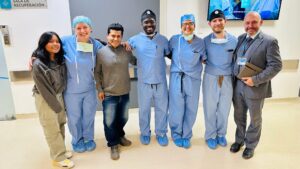Introduction: During cardiopulmonary bypass (CPB), supranormal concentrations of oxygen are routinely administered with the intention to prevent cellular hypoxia. However, hyperoxemia may have adverse effects on patient outcome. Oxygen settings are based on the perfusionist’s individual work experience rather than profound recommendations and studies analyzing the effect of oxygen levels are in need of methodological improvement. We aimed to advance perfusion technique by developing and clinically applying a formula for tailored oxygen therapy in CPB.
Methods: A formula to precalculate the oxygenator setting before CPB was developed. The newly-derived formula was then evaluated in a prospective, single-center pilot study to test whether a predefined arterial partial oxygen pressure (PaO2) of 150-250 mmHg could be reached. 80 patients were enrolled in the study between April and September 2021.
Results: The mean oxygen fraction calculated for the setting of the gas blender was 52% ±0,12. The mean PaO2 after initiation of the CPB was 193 ± 99 mmHg (min-max: 61-484, median 163 mmHg). 38.75% of the values were in the desired PaO2 corridor of 150 to 250 mmHg. 8.75% of all PaO2 values were below <79.9 mmHg, 31.25% between 80 and 149.9 mmHg, 38.75% between 150 and 249.9 mmHg and 21.25%>250 mmHg.
Conclusions: Conceptually, perfusion technique should be goal-directed, guided by objective parameters and formulas. Although the optimal CPB oxygenation target remains unknown, it is nevertheless important to develop strategies to tailor oxygen therapy to aid in creating evidence as to what level of oxygen is best for patients during CPB. The formula we derived needs further adjustments to increase results in the target range.
Keywords: Cardiac surgery; arterial oxygen partial pressure; formula; gas blender; heart-lung-machine; inspiratory oxygen fraction; setting.







